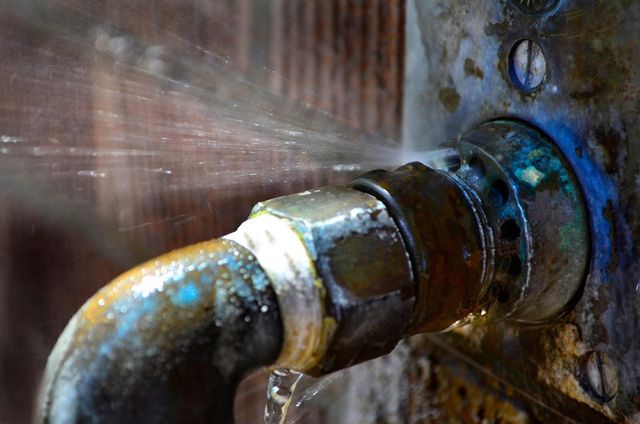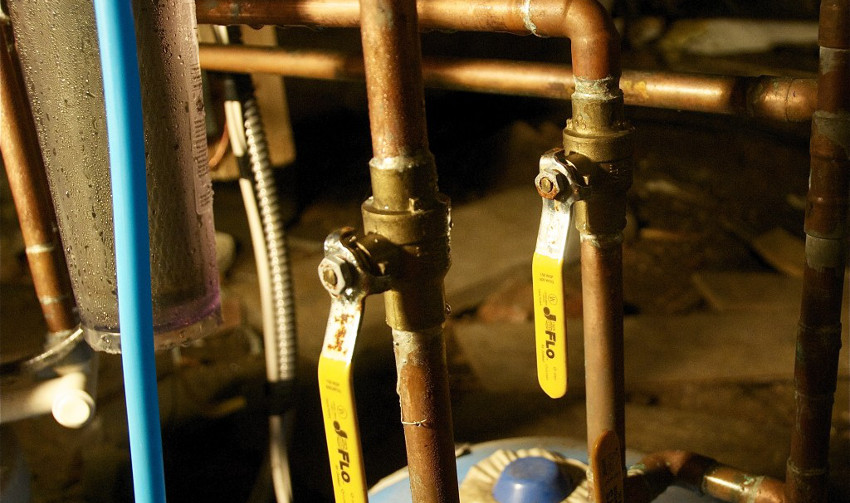What're your opinions concerning Why Do My Pipes Make Noises?

To detect loud plumbing, it is necessary to identify very first whether the unwanted noises happen on the system's inlet side-in other words, when water is turned on-or on the drain side. Noises on the inlet side have varied reasons: too much water stress, worn valve and faucet components, poorly attached pumps or various other home appliances, improperly put pipe fasteners, and plumbing runs containing too many tight bends or various other constraints. Sounds on the drainpipe side typically stem from poor location or, similar to some inlet side sound, a design including limited bends.
Hissing
Hissing sound that happens when a faucet is opened slightly usually signals too much water pressure. Consult your local water company if you believe this trouble; it will be able to inform you the water pressure in your area and also can set up a pressurereducing valve on the incoming water pipeline if required.
Other Inlet Side Noises
Squeaking, squeaking, scratching, breaking, and touching normally are caused by the expansion or tightening of pipes, generally copper ones providing hot water. The sounds take place as the pipes slide against loose bolts or strike close-by house framework. You can typically pinpoint the area of the issue if the pipes are revealed; just adhere to the noise when the pipes are making noise. More than likely you will discover a loosened pipe wall mount or an area where pipelines lie so near floor joists or other mounting items that they clatter against them. Affixing foam pipe insulation around the pipelines at the point of contact need to fix the trouble. Make sure bands as well as hangers are safe and provide appropriate support. Where feasible, pipe bolts should be connected to massive architectural elements such as structure wall surfaces rather than to mounting; doing so decreases the transmission of vibrations from plumbing to surface areas that can enhance and also transfer them. If connecting bolts to framing is inescapable, wrap pipes with insulation or various other resilient material where they speak to fasteners, as well as sandwich completions of new bolts in between rubber washers when mounting them.
Dealing with plumbing runs that suffer from flow-restricting tight or countless bends is a last resort that should be embarked on just after speaking with a proficient plumbing contractor. Regrettably, this scenario is relatively usual in older houses that may not have actually been built with interior plumbing or that have seen a number of remodels, specifically by beginners.
Chattering or Shrieking
Intense chattering or shrilling that takes place when a valve or faucet is switched on, which generally goes away when the installation is opened fully, signals loose or faulty interior components. The remedy is to change the shutoff or tap with a brand-new one.
Pumps and appliances such as washing machines and dishwashing machines can transfer electric motor sound to pipelines if they are poorly connected. Link such items to plumbing with plastic or rubber hoses-never rigid pipe-to isolate them.
Drainpipe Noise
On the drain side of plumbing, the principal objectives are to get rid of surface areas that can be struck by dropping or hurrying water and also to shield pipelines to have inescapable sounds.
In new construction, bathtubs, shower stalls, bathrooms, as well as wallmounted sinks as well as basins ought to be set on or against resilient underlayments to decrease the transmission of sound through them. Water-saving toilets and faucets are less loud than standard versions; mount them rather than older types even if codes in your area still permit using older fixtures.
Drainpipes that do not run up and down to the cellar or that branch right into straight pipe runs sustained at flooring joists or various other mounting present especially problematic noise problems. Such pipelines are huge sufficient to radiate considerable resonance; they likewise bring significant amounts of water, that makes the scenario even worse. In new construction, define cast-iron dirt pipelines (the big pipes that drain bathrooms) if you can afford them. Their enormity has a lot of the noise made by water passing through them. Additionally, stay clear of directing drainpipes in wall surfaces shown to bed rooms and spaces where people gather. Wall surfaces including drainpipes need to be soundproofed as was defined previously, utilizing double panels of sound-insulating fiberboard and also wallboard. Pipes themselves can be wrapped with special fiberglass insulation created the function; such pipes have a resistant plastic skin (in some cases having lead). Results are not constantly adequate.
Thudding
Thudding noise, frequently accompanied by shuddering pipelines, when a tap or device valve is turned off is a problem called water hammer. The sound as well as vibration are brought on by the reverberating wave of pressure in the water, which instantly has no location to go. In some cases opening a valve that releases water swiftly into an area of piping consisting of a limitation, elbow, or tee fitting can produce the exact same condition.
Water hammer can normally be cured by setting up installations called air chambers or shock absorbers in the plumbing to which the problem shutoffs or taps are linked. These tools enable the shock wave developed by the halted flow of water to dissipate airborne they contain, which (unlike water) is compressible.
Older plumbing systems might have short upright areas of capped pipeline behind walls on tap runs for the exact same objective; these can ultimately loaded with water, reducing or destroying their efficiency. The cure is to drain the water supply completely by turning off the primary water valve as well as opening up all faucets. Then open up the main supply valve as well as shut the taps individually, starting with the tap nearest the shutoff and ending with the one farthest away.
3 Most Common Reasons for Noisy Water Pipes
Water hammer
When water is running and is then suddenly turned off, the rushing liquid has no place to go and slams against the shut-off valve. The loud, thudding sound that follows is known as a water hammer. Besides being alarming, water hammer can potentially damage joints and connections in the water pipe itself. There are two primary methods of addressing this issue.
Check your air chamber. An air chamber is essentially a vertical pipe located near your faucet, often in the wall cavity that holds the plumbing connected to your sink or tub. The chamber is filled with air that compresses and absorbs the shock of the fast moving water when it suddenly stops. Unfortunately, over time air chambers tend to fill with water and lose their effectiveness. To replenish the air chambers in your house you can do the following. Turn off the water supply to your house at the main supply (or street level). Open your faucets to drain all of the water from your plumbing system. Turn the water back on. The incoming water will flush the air out of the pipes but not out of the vertical air chamber, where the air supply has been restored. Copper pipes
Copper pipes tend to expand as hot water passes through and transfers some of its heat to them. (Copper is both malleable and ductile.) In tight quarters, copper hot-water lines can expand and then noisily rub against your home's hidden structural features — studs, joists, support brackets, etc. — as it contracts.
One possible solution to this problem is to slightly lower the temperature setting on your hot water heater. In all but the most extreme cases, expanding and contracting copper pipes will not spring a leak. Unless you’re remodeling, there's no reason to remove sheetrock and insert foam padding around your copper pipes.
Water pressure that’s too high
If your water pressure is too high, it can also cause noisy water pipes. Worse, high water pressure can damage water-supplied appliances, such as your washing machine and dishwasher.
Most modern homes are equipped with a pressure regulator that's mounted where the water supply enters the house. If your home lacks a regulator, consider having one professionally installed. Finally, remember that most plumbers recommend that water is delivered throughout your home at no lower than 40 and no greater than 80 psi (pounds per square inch).
Whatever the state of your plumbing, one thing is certain — you’re eventually going to encounter repair and replacement issues around your home that require professional help. That’s where American Home Shield can come to your aid.
https://www.ahs.com/home-matters/repair-maintenance/causes-of-noisy-water-pipes/

I hope you enjoyed reading our topic on Why Do My Plumbing Pipes Make A Knocking Noise. Thanks a ton for taking the time to read our blog post. Sharing is nice. Helping others is fun. Many thanks for going through it.
Instant Quote